The need for fast and reliable internet is at an all-time high, with modern households leveraging powerful network support for streaming, gaming, remote work, and smart home devices. The 10GB router is a modern innovation capable of providing unparalleled speed, efficiency, and connectivity. With so many options provided in the market, selecting one tailored to your household requirements can be daunting. This article highlights some of the best 10GB routers by extensively analyzing their performance and adaptability for varying needs. From discerning tech lovers to those simply wanting an internet experience upgrade, this guide is crafted to enable making the right choice for the home network setup.
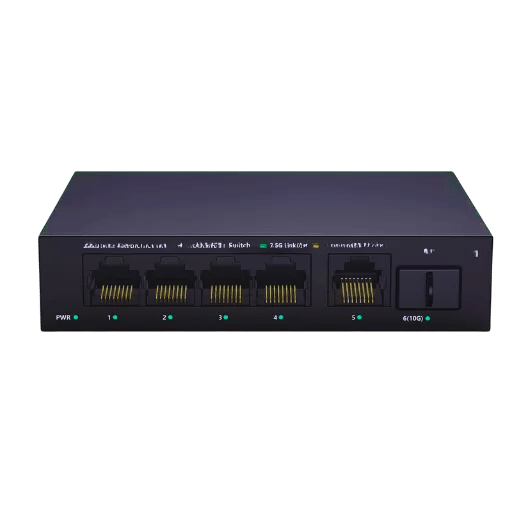
A 10GB router is a networking equipment that operates at a speed of 10 gigabits per second (Gbps). This speed is significantly greater than what conventional routers can attain. It is best suited for operations with high data transfer requirements, such as 4K streaming, online gaming, and quick data transfer. These routers are backed with advanced technology, containing multiple high-speed Ethernet ports and state-of-the-art wi-fi, and ensure optimal performance for modern networks.
A router, as a networking device, joins different hardware constituents of a single local area network (LAN) while also managing the communication with external networks (for example, the Internet) using 10GB ports. It most importantly makes sure the data packets are routed and forwarded to each device as it was intended. Also, routers allow multiple devices to share a single broadband connection and incorporate a multitude of security features, including firewalls, to enable the protection and shielding from external attacks. Routers safeguard the performance, reliability, and connectivity of the network, whether it be at home or for more complex business operations.
The 10GB router archetype allows for optimal network performance by facilitating quick data transfers and lowering latency. It sustains immense amounts of simultaneous connections, making it ideal for workplaces or smart homes with countless users or devices. Additionally, the increased bandwidth enables unprecedented 4K and 8K video streaming, swift downloads, and immersive online gaming. It helps eliminate bottlenecks, which improves overall network performance, ensuring dependable connectivity for other highly-demanded applications.
Unrivaled Speeds in Data Transmission
The 10GB Router provides the unparalleled advantage of having data transmission speeds of up to 10 Gbps. Performing tasks like high scale cloud computing, file transfers, data analysis, and other data-intensive tasks become significantly easier with a 10 GB router.
MCD (Multi-Connection Device) Technology
As its name suggests, a 10GB router can support numerous devices simultaneously with the latest MU-MIMO technology. Smart homes and interconnected devices are growing in number. Homes or offices with dozens of smart devices can take advantage of MU-MIMO, as it provides consistent performance across all devices.
Low Latency for Real-Time Application
Latency is critical when it comes to real-time responsiveness. 10GB routers provide the minimum delay possible which leads to smooth communication. Having low latency when using routers becomes essential in gaming and video conferencing.
Protection Employed
With advanced features, 10GB routers feature strong security protocols which include WPA3 encryption paired with built firewalls and integrated VPNs. Protecting sensitive data from cyber threats while providing strong security is essential to any network.
Meeting Future Requirements for Scalability
The 10GB router’s capability is supportive of future technological developments and rising data needs. It can scale effortlessly with the upgrading of more devices or integration of more recent technologies.
Streamlining Streaming of 4K/8K Media Content
The immense bandwidth of the 10GB router enables seamless streaming of 4k and 8k videos without interruption. It provides high-quality video content without buffering delays, even when multiple devices are used for streaming simultaneously.
Enhanced Energy Savings
Using modern 10GB routers is a green living solution, as they are designed using more advanced hardware and software techniques towards energy efficiency. They lower the operational power costs without weakening energy output.
Integrated QoS (Quality of Service)
With Quality of Service, Important applications like video conferencing and online gaming can receive higher bandwidth compared to low demanding tasks. This routing paradigm guarantees smooth execution of command soft and hard networking resources heavy tasks, even amidst, peak traffic conditions on the network.
Expansive Coverage with Mesh Compatibility
Numerous 10GB routers have mesh network support which increase Wi-Fi access over wide home and office spaces. Such systems use several integrated nodes to remove dead zones while retaining one uninterrupted high-speed connection.
Backward Compatibility
Even with the technological strides made with 10GB routers, their capabilities extend to supporting prior devices and Wi-Fi standards. This allows for effortless integration with existing hardware and ease in phasing out outdated components.
Real-World Applications
Due to the high-performance requirements in an SMB setting or even a tech-savvy home, a 10GB router is ideal. In the creative fields, especially video production, other technologies can keep up with demand, therefore, a 10GB router allows users to focus on meeting modern-day technological workloads effectively.
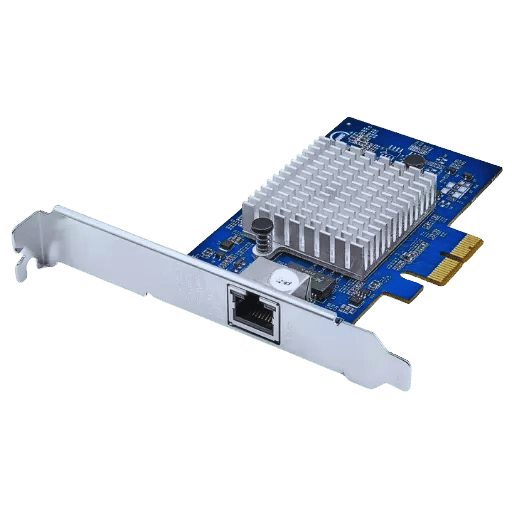
Speed and Efficiency Metrics
To satisfy 10GB demands, a router should offer efficient data transfer speeds. Check for models that implement the IEEE 802.3bz standard, since they offer multi-gig capabilities. Many 10GB routers have been shown to achieve around 9.4 Gbps on real life tests via Ethernet connections, which is more than enough for critical tasks like large-scale data transfers or video editing.
Ports Configuration and Extendability
The range and type of ports accompanying the router needs to be assessed. A competent 10GB router should offer several 10GbE and multi-gig ports to accommodate different network configurations like Ethernet backhaul to servers or NAS. Choose devices with copper (RJ-45) and fiber (SFP+) ports for better future scalability and adaptability with changing infrastructures.
Processing Power and RAM
The ability of a given router to withstand peak loads while a multitude of devices are connected simultaneously will be influenced directly by its hardware specs such as the CPU and memory. Advanced models are starting to feature quad-core processors with 1GB of RAM, making it easier to implement sophisticated network features such as QoS (Quality of Service) or VLAN (Virtual Local Area Network) management.
Security Features
The data volumes processed by 10GB routers demand uncompromising security. Look for WPA3 encryption, firewall intrusion protection, IPS, Virtual Private Network (VPN) support, and other inclusions. For businesses, advanced cyber security measures and firmware updates because of constantly evolving threats.
Range and Signal Strength
As per the size of your workplace, the range and coverage radius of the router matter. Models implementing Wi-Fi 6 or Wi-Fi 6E offer stronger signal and coverage, ensuring all devices are conveniently connected. Tests indicate that Wi-Fi 6 enhances throughput efficiency by up to 40% compared to older standards, making it a must have for the modern setting.
Compatibility with Existing Infrastructure
These parameters should be ranked with high priority because of older networking equipment. A worthy 10GB router should function with the legacy cabling, switches, and access points seamlessly incorporating 10GB ports to improve performance. To fully utilize the 10 Gbps transmissions, CAT6a or CAT7 Ethernet cables should be used.
Power Consumption
Because of their sophisticated technology, 10GB routers will consume greater power. Check the energy efficiency ratings of the router and look at models equipped with power management features to minimize operating costs over time. Optimized well, energy efficient models can cut power consumption by as much as 30%.
Analyzing these essential considerations allows the users to choose a 10GB router tailored to their requirements while providing strong and high-quality network connectivity to meet current data needs.
Leading Brands That Sell 10GB Routers
10GB routers incisively outstrip traditional routers in areas such as speed, network depth, and dependability. While older routers offer maximum speeds of 1GB and often much lower than that in ideal conditions, 10GB routers offer a staggering ten GBs of speed, which modern applications require. Such performance is unparalleled in environments demanding high bandwidth like cloud computing, video conferencing, or low latency gaming.
Although more cost effective, traditional routers suffer greatly in network multipoint scenarios, increasingly struggling in a multi-user or device context. Standard routers face the added challenge of heavy data traffic environments, leading to data bottlenecks. In contrast, most 10GB routers like Cisco and ASUS do offer basic QoS features but with powerful multi-core processors, allowing efficient management of several data streams, which enables seamless performance under significant load.
The most fundamental difference is in the wired connectivity options. As with all traditional routers, Ethernet connections are limited to 1 Gbps, while 10GB routers offer 10 GbE ports, which are suitable for high-speed wired connections. This is useful in business settings where large files need to be transferred quickly or in video workflows that require a lot of data to be transmitted in real time. Additionally, numerous 10GB routers come with support for the latest Wi-Fi standards, like Wi-Fi 6 or Wi-Fi 6E, which is a tremendous boost in wireless speed and range when compared to older models.
These are far better when it comes to security for enterprises as 10GB routers have advanced security features as compared to traditional routers. From advanced IPS to encrypted VPN support, these routers protect the users from new network threats far better than older ones do.
As a whole, while traditional routers remain a practical solution for everyday use in smaller households or low demand settings, the 10GB router is the clear winner for professional settings where exceptional speed, advanced features, and modern scalability are required to meet contemporary needs.

Wi-Fi 7, also referred to as IEEE 802.11be, is set to revolutionize the wireless world with its unmatched performance and efficiency. One of its significant advancements is the addition of 320 MHz channel bandwidth, which increases the capacity of Wi-Fi 6 twofold, permitting quicker data transfer speeds than before. Moreover, Wi-Fi 7 enables Multi-Link Operation (MLO), which permits devices to connect to various frequency bands, including 2.4 GHz, 5 GHz, and 6 GHz at the same time, providing better throughput and even lower latency, and improved dependability.
The introduction of 4K-QAM (4K Quadrature Amplitude Modulation) is another notable advancement. This technology improves data density which increases the data rate up to 20% compared to Wi-Fi 6’s 1024-QAM. This refinement in modulation efficiency is extremely advantageous for high-bandwidth usage such as the consumption of 8k videos, virtual reality, and large scale IoT deployments.
An additional benefit of Wi-Fi 7 is extended support for Time Sensitive Networking (TSN) that guarantees minimal delay with high precision for ultra-real-time data transmission. This is essential for scenarios like industrial automation or augmented and virtual reality settings. Along with this, the boosted capabilities and the efficient network will make Wi-Fi 7 perfect for spaces densely populated with devices such as smart homes or enterprise structures, especially those with 10GB ports.
This new standard holds the possibilities of accommodating speeds of up to 46 Gbps under optimum conditions which is a steep advancement over the speed of Wi-Fi 6 which was theorized at 9.6 Gbps. These advancements showcases the modern requirements for connectivity, making Wi-Fi 7 a more reliable solution for personal and professional networks.
The implementation of Wi-Fi 7 routers enables smarter integration within the home through faster speeds, lower latency, and increased capacity for handling multiple devices at once. MLO (Multi-Link Operation) features permit these devices to communicate over several frequency bands at the same time, which expedites the transmission of data and mitigates congestion. This guarantees security cameras, voice assistants, and other devices in smart homes operate optimally without disruptions, hence improving the responsive experience when connected.
In assessing the value proposition for Wi-Fi 7, its costs and performance considerations must be evaluated. Currently, Wi-Fi 7 routers sit at the ultra-high end of the market, charging premium prices far above those for Wi-Fi 6 and Wi-Fi 6E models. Early estimates indicate that Wi-Fi 7 router pricing will start between $400 and $ 700 based on brand and features. On the other hand, Wi-Fi 6 models can be easily purchased for between $100 and-300, making the switch considerably expensive, especially for those looking to take advantage of 10GBps speeds.
Regardless, the network capabilities promise significant increases in performance with Wi-Fi 7 technology. Wi-Fi 7 is targeted towards ultra-high demand tasks such as 8K video streaming and virtual reality gaming with peak theoretical speeds capable of reaching 46 Gbps, nearly quadrupling the maximum of 9.6 Gbps for Wi-Fi 6. In addition, the addition of 320 MHz channel bandwidth (twice that of Wi-Fi 6E), as well as 4K QAM modulation, will maximize the available spectrum and improve performance in heavily loaded networks.
For the majority of average users, however, the current internet speeds offered by ISPs are far slower than the potential of Wi-Fi 7, meaning these routers might remain underused unless paired with equally high-speed internet plans. In addition, the device ecosystem is still catching up—only a limited number of devices currently support Wi-Fi 7, which might inhibit widespread adoption within homes and offices.
In the end, everything boils down to the user’s specific needs and whether the added features of Wi-Fi 7 are beneficial to them. For early adopters needing ultra-high-speed networking for intensive professional tasks or advanced entertainment, it might make sense. More modest users, however, would still benefit from Wi-Fi 6 or 6E at a more reasonable price. In the future, as the technology develops and becomes more accessible, Wi-Fi 7 is anticipated to provide a better cost-to-performance ratio.
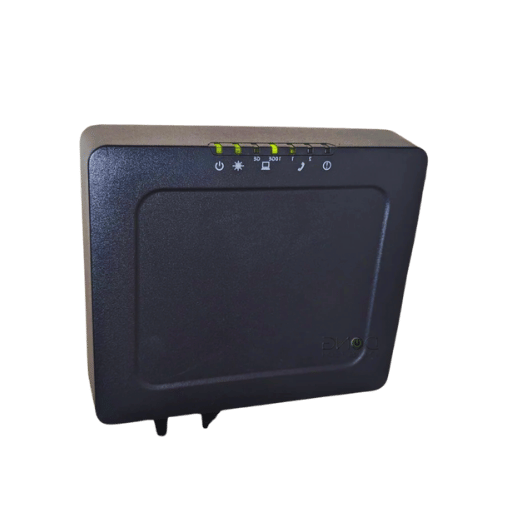
In the realm of high-speed internet, particularly those offering lower than 10 Gbps, choosing the right mesh router system is critical as it determines performance efficacy. Below are two of the best available mesh router models which claimed to offer high speed internet connectivity with features and dependability that will do one’s expectations proud.
1. Netgear Orbi RBKE963
Netgear is a household name when it comes to Mesh routers and also Solar Power Adapters for laptops. Having a brilliant maximum output of 10.83Gbps, this booster is definitely not lagging with its Ultraband WiFi 6E capabilities and its market-leading 16-stream connectivity and Tri Band design. Netgear also excels in extreme range coverage as this can cover a banishable 9,000 square feet top rated coverage.
This is most ideal for large households along with 4K streaming, online gaming, and even smart home automation.
2. ASUS ZenWiFi Pro ET12
Astoundingly outperforming the previous models with 11 Gbps, this dual band TP link Pro W609 can hold its own with its dual passthrough backhaul option and UltraWide Band Wi-Fi 6E capabilities along with impeccable 6,000 square feet coverage.
Best suited for users needing comprehensive expansion within range and also covered by peak performance on wired and wireless connections.
3. eero Pro 6E
Maximum Speed: 1.3 Gbps wireless (supports gigabit wired connections)
Key Features:
Ideal For:
4. TP-Link Deco XE75
Key Features:
Ideal For:
5. Google Nest Wifi Pro
Key Features:
Ideal For:
Google smart home device owners who seek effortless usage and device pairing.
From ultra-fast gaming and streaming setups to budget-friendly solutions for smart homes, each of these mesh systems comes with unique strengths catered to varying user demands. While selecting a mesh router, be certain to evaluate your coverage needs, the amount of connected devices, and projected future requirements to guarantee efficient long-term performance.
Setting up a mesh system in the home is quite simple, but effective organization and placement of components is critical to optimizing performance and coverage. Here is a guide to follow step by step to ensure everything is done correctly:
Situating the Main Router
To begin, plug the primary node, often referred to as the main router, into the modem using the included ethernet cable. Make sure to place this node in a central area of the home so the signal can be evenly distributed. Also, do not put this router in areas with thick walls, like the center of the house, or areas with electronic interference like microwaves and cordless phones.
Placement of Satellite Nodes
Position the individual satellite nodes so that coverage areas from each particular node overlap without leaving too much spacing in between. A rough distance of 30 to 50 feet from each node is recommended depending on the size and layout of the home. Some models even come with phone applications which have signal strength meters which assist in finding the ideal placement.
Integration into the System
After physical placement, use the designated app or web interface of the manufacturer to add each node into the system. Usually these tools will walk you through the steps to set the network name (SSID), and secure network password. It is highly recommended to use the highest possible security settings by switching on WPA3 Encryption.
Firmware Updates
After a network has been created, every node’s firmware version must be verified to check whether it is up to date. Most mesh systems offer automatic updates and mesh system updates, enhancing both performance and security automatically in the background.
Optimize with Additional Features
Most mesh systems offer additional features like device prioritization, guest networks, and parental controls. Adjust these settings to better fit your household needs. For instance, device prioritization makes it possible to give additional bandwidth to devices such as streaming and gaming consoles during peak hours.
Monitor and Adjust
Make use of the vendor’s built-in diagnostic tools to track the system’s performance metrics after initial configuration. Depending on the results, one may need to relocate nodes or adjust several configurable settings to eliminate low signal or high interference areas. Many modern systems also include AI-driven optimization for adaptive modifications over time.
Careful attention to these details will ensure your mesh system provides a dependable and high speed network for all gadgets.
Pros:
Cons:
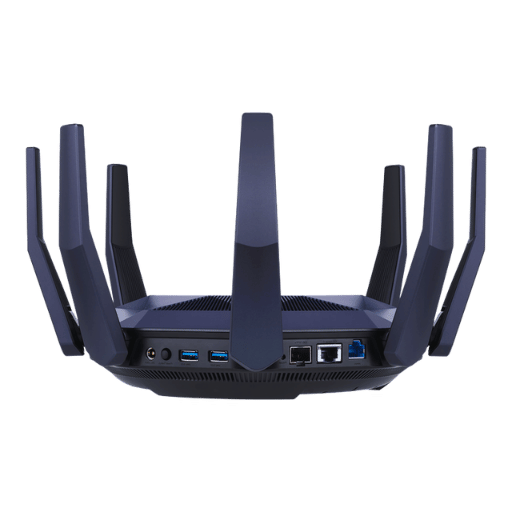
Asus ROG Rapture series has been tailored toward gamers with industry-leading features that enhance online gaming performance. Below are some highlighted features that distinguish this series.
Ultra High-Speed Online Access: The ROG Rapture series routers are compatible with Wi-Fi 6 and, for some models, Wi-Fi 6E, with a staggering throughput of 10 Gbps for seamless connections. These standards come with enhanced network responsiveness and lower latency, making them perfect for bandwidth-heavy tasks and competitive gaming.
Multi-Gig Ethernet Ports: A number of the ROG Rapture models come with 2.5G or even 10G Ethernet ports, which provide sub-optimal latency for wired connections to desktops, gaming consoles, or other high-end devices, making them some of the most advanced Wi-Fi routers on the market.
The above advantages bestow the Asus ROG Rapture series the distinct position of being powerful networking solutions for gamers who require uncompromising performance to meet the demands of their gaming rig.
To ensure a seamless gaming experience on a gaming router, consider the following top suggestions:
Following these tips will enhance the performance of the gaming router and take full advantage. These techniques provide better and consistent connectivity during gaming sessions.
What sets gaming routers apart from standard routers is their capability to facilitate performance networks specifically for gaming. Gaming routers, unlike standard routers, come equipped with advanced Quality of Service (QoS) features that minimize gaming latency and packet loss by giving priority to gaming traffic. In addition, gaming routers often have higher-grade parts like faster processors and better signal antennas, which aid in maintaining dependable connections and higher data throughput. Furthermore, to outdo competitors, gaming routers offer advanced customizability, which includes customizable network configurations, gaming-optimized ports, and enhanced server connection, which make them some of the best WiFi routers for gamers. Unlike standard routers, which are suitable for non-intensive internet activity, gaming routers are built to cater to the immense demands of online gaming.
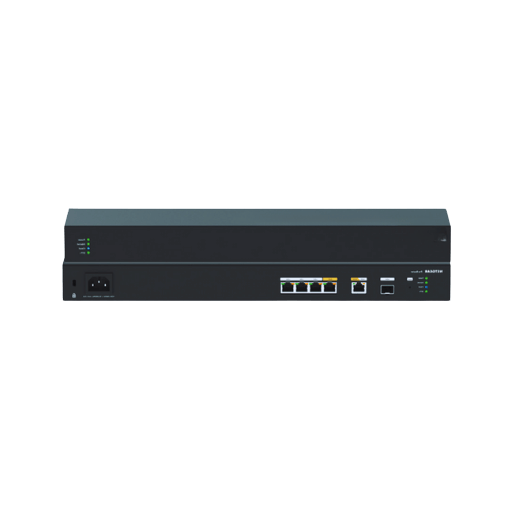
A: Asus ROG Rapture GT-BE98 Pro, Asus ZenWiFi, and Asus RT-BE96U are some of the best 10GB routers, providing incredible speed. They include dual 10G ports and support Wi-Fi 6E and Wi-Fi 7.
A: A 10GB router enhances your home network by offering faster data transfer speeds, reduced latency, and greater capacity for simultaneous connections. This is advantageous during gaming, streaming, and operating smart home devices.
A: There is increased speed and efficiency compared to previous generations with Wi-Fi 6 routers, while the performance enhancements are extended to the 6 GHz band on the Wi-Fi 6E routers. The additional spectrum makes for lower interference.
A: Wi-Fi 7 routers offer even faster speeds with quad-band support and wider channels, greatly improving the responsiveness of the network, especially for households with many connected devices.
A: With a dual 10G port, a router can accommodate two 10 Gbps connections, which can be vital in optimizing network throughput and providing redundancy, especially in ultra-high demand activities such as gaming or HD video streaming.
A: Certainly, a 10GB router is compatible with existing Ethernet devices. It usually has several Ethernet sockets like a 10GB Ethernet socket, which is backward compatible with older Ethernet standards.
A: The distribution of traffic in your network can be improved because tri-band and quad-band Wi-Fi routers have multiple frequency bands. These routers can reduce interference while optimizing performance, particularly for demanding bandwidth activities.
A: Your home network and the internet gets connected through a WAN port therefore the WAN port is crucial in a 10GB router. The internet connection speed improves significantly with a 2.5G or 10G WAN port alongside enhancing your router’s ability to manage high-speed connections.
A: A 10GB router can serve and provide excellent speeds to various devices requiring wired connections. An Ethernet switch will improve this function by increasing the available ethernet ports as well as the number of connected devices.
A: Asus models offer the Asus ZenWiFi 7 Mesh which is one of their whole home mesh models known to provide great performance. They also ensured the ease of setting it up as well as proving connectivity throughout the house which other brands often struggle with.
1. Deployment of a 10 Gb Ethernet Switch Hardware Platform With A Network Processor And A 10 Gb EMAC
Important Insights
Research Approach:
2. A 10Gb/s Si-Bipolar TX/RX Chipset for Computer Data Transmission
Main Results:
Approach:
3. Recent Results on Sizing Router Buffers
Summary:
Research Approach: